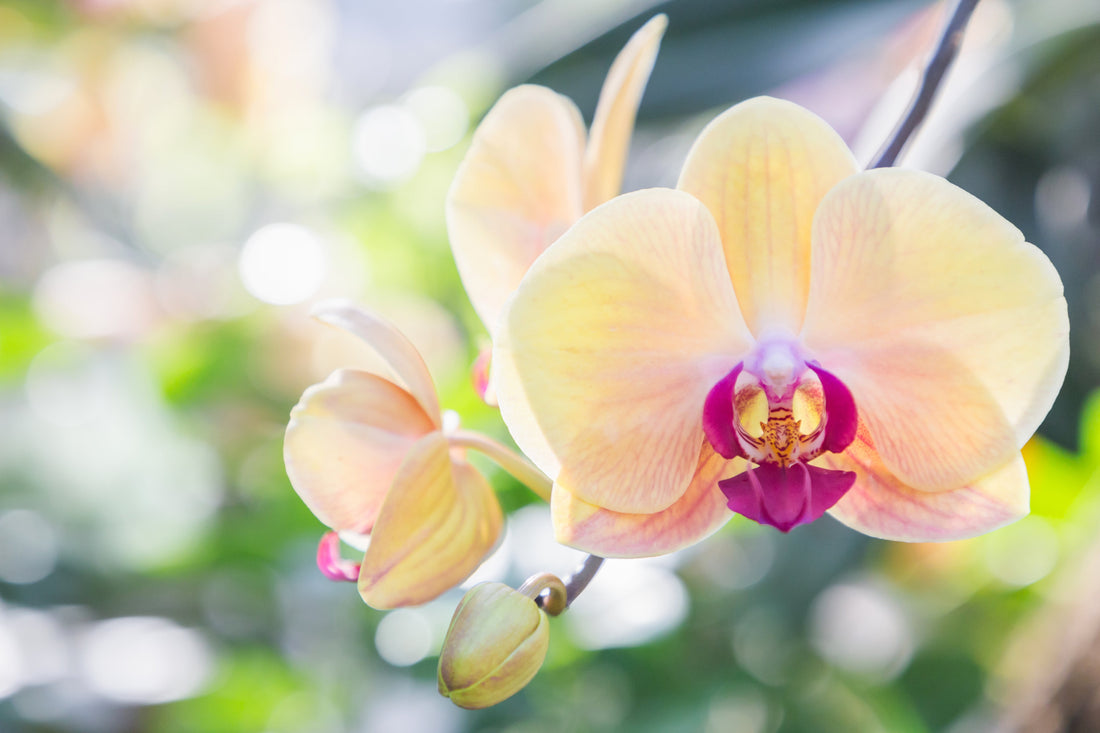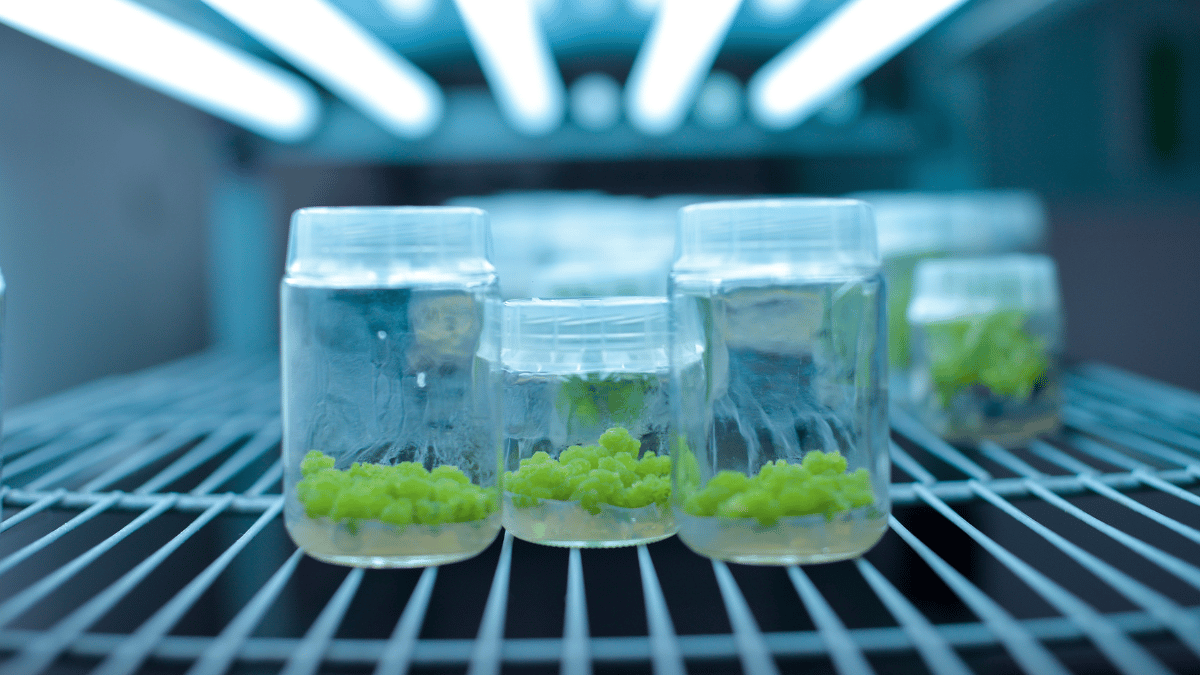
How to Propagate Orchids using Tissue Culture methods
As a content and community manager, I leverage my expertise in plant biotechnology, passion for tissue culture, and writing skills to create compelling articles, simplifying intricate scientific concepts, and address your inquiries. As a dedicated science communicator, I strive to spark curiosity and foster a love for science in my audience.


The Orchidaceae (family of orchids) is the most diverse flowering family, with about 25,000-28,000 species growing in different regions of almost all continents, except Antarctica. Furthermore, about 148,460 hybrids of orchids are also registered.
The flowering species varies in its habits to habitats, sizes to shapes, and colors to smells. The diversity in the shape of the flowers justifies for the highly specialized pollinating mechanism of the members of the family.
About 6-11% of seed plants are represented by orchids. The most popular and largest of over 800 genera include Phalaenopsis, Bulbophyllum, Dendrobium, Pleurothallis, and Vanilla.
The properties of orchids, like their attractiveness, long shelf life, high productivity, and ease in packing and transportation, attract several commercialists and hobbyists. Therefore, these flowers hold a significant position in the international cut-flower market. The topmost exporting country of orchids includes the Netherlands, Thailand, Taiwan, Singapore, and New Zealand.
This article poses a brief description of Orchids and the procedure for their in-vitro propagation using tissue culture methods.
Description of Orchids
How do you identify orchids? Understanding the features of orchids helps in their identification and categorization.

|
Classification Kingdom: Plantae Subkingdom: Tracheobionta Superdivision: Spermatophyta Division: Magnoliophyta Class: Liliopsida (Monocots) Subclass: Liliidae Order: Orchidales Family: Orchidaceae |
1. Stem and Roots
An orchid’s stem supports the flower of the plant and is also called a pedicel. Depending on their habitats, Orchids have different stem types. For example, terrestrial orchids may have rhizome, corms, or tubers. Orchid stems follow two modes of axillary branching: monopodial and sympodial branching.
The roots of terrestrial orchids are tuberous whereas epiphytes (which grow on other plants for support) have aerial roots. In the older regions of roots, the modified spongy epidermis is present which is called Velamen and has the function of absorbing humidity.
2. Leaves
Orchid leaves have parallel veins and rarely reticulate veins. The shapes of their leaves vary from ovate, lanceolate to orbiculate, and they are arranged in alternate fashion on the stem. The leaves of some orchids are also considered ornamental.
3. Flowers
Orchids show structural diversity in their flowers. Some plants have single flowers, however, many show racemose inflorescence (youngest flowers at the top and oldest ones at the bottom).
The flower consists of three outer whorls of sepals and three inner whorls of petals. The middle petal forms a specialized labellum or lip-like structure which assists in their pollination mechanisms.
Figure: The image of the orchid flower showing the specialized structure of staminode (sterile stamens) and labellum that assist in the pollination mechanism of the flowers.

Source:https://www.fs.fed.us/wildflowers/beauty/cypripedium/about.shtml |
4. Reproduction
Orchids show both sexual and asexual reproduction (by vegetative propagation). The vegetative propagation is done using bulbs and offshoots.
5. Fruits
The fruits of an orchid develop into capsule form and their size may depend on the size of the flower. The spikes of some species contain many capsules, however, some contain only a few capsules. The number of capsules in a spike depends on the number of flowers fertilized.
Tissue Culture of Orchids
The cultivation of monocot explants is more difficult to culture than dicot explants. However, some parts of some species of orchids, like floral meristem and protocorms of genus Cymbidium, can be cultured using a simple vitamin B-containing medium.
Requirements
- Rimless culture tubes containing 10 ml agar medium.
- Tissue paper
- Erlenmeyer flasks (250 ml) containing 200 ml distilled water.
- Petri dishes
- Aluminum foil
- Forceps
- Scalpels
- Pseudobulbs of Orchids
- Glass beaker containing 200 ml 20% solution (v/v) of a commercial bleach preparation.
- Glass beaker (250 ml) containing 200 ml of 95% ethanol.
- Metal scalpel
- Bunsen burner
- Erlenmeyer flask containing 100 ml 95% ethanol.
Procedure
- Take the pseudobulbs and remove all the side buds, revealing meristem.
- The meristem will still be covered with the small leaves.
- Cut through the base of buds with a scalpel and dip the pieces in the 95 % ethanol for 10 seconds.
- Take out the buds and remove the extra ethanol and then immerse the pieces again in the hypochlorite solution for 25 minutes.
- Remove the buds from the solution and wash them thoroughly with three changes of sterile distilled water.
- Place buds in the 95 % ethanol for 10 seconds to remove the leaves.
- After removing leaves, rinse the explant with sterile water.
- Carefully separate the meristem using a sharp scalpel under a microscope.
- Place the meristem in agar-containing cultured tubes.
- Incubate the culture in white light at 25 ℃ for 8 days.
- After 8 days, a perfect green-colored protocorm will be visible.
- Subdivide the protocorm in the cultured tubes using a sharp sterile scalpel.
- Place the pieces on agar, flame the mouth of the tube, and cover it using aluminum foil.
Timing of the Events
| S.No. | Events | Timing |
| 1. | Meristem removal and initiation of cultures at 25℃ | Day 0 |
| 2. | The appearance of first green protocorms | Day 8 |
| 3. | Fully-developed protocorm | Day 29 |
| 4. | Sub-divide protocorm | Day 29 |
| 5. | The appearance of fresh green protocorms that can be subdivided again | Day 50 |
Use of Orchids
Some Orchids are used as medicinal plants, some are used as spicing and flavoring agents, and many others are used as ornamental plants. The most significant use of orchids are explained below:
- In some countries, like China, Dendrobium is used as a source of tonic, astringent (that causes constrictions), analgesic (painkiller), and anti-inflammatory substance.
- The most popular flavoring agent, Vanilla, is extracted from the pods of Vanilla planifolia.
- In some countries, bulbs and tubers of some orchid species are consumed.
- The popular beverage “Faham” or “Madagascar tea” in Madagascar is prepared by using the orchid Jumellea fragrans.
- The orchids like Dendrobium moniliforme and Phalaenopsis javanica are used in perfumery.
- Some orchids are just used in gardening or for the cultivation of flowers. It includes several species of the genus Pleurothallis and Bulbophyllum.
References
- Reinert J. and Yeoman M. M. (1982). Plant Cell and Tissue culture: A laboratory manual. Springer-Verlag, Berlin Heidelberg, Newyork.
- De, C. L., and Medhi P. R. Orchi-A diversified component of farming systems for the profitability and livelihood security of small and marginal farmers. Journal of Global Biosciences, 4 (2), 1393-1406.
- http://www.pgis.pdn.ac.lk/yrf/sci2014/5/final%2001_Part5.pdf
- https://www.britannica.com/plant/orchid/Natural-history
- https://www.orchid-care-tips.com/all-about-orchids.html
- https://www.aos.org/orchids.aspx
- https://en.wikipedia.org/wiki/Orchidaceae
Blog Categories
View by Level
Popular Blogs

Callus Culture: Definition and Applications
Introduction Tissue culture is not just one technique! Yes, you heard right! As you know, tissue culture is an advanced...
Read More
6 Plant Tissue Culture Books to Keep Learning
Introduction Most of us are fans of books when it comes to learning a topic in detail and in a...
Read MoreSubscribe to Our Newsletter








Join the conversation
Your email address will not be published. Required fields are marked